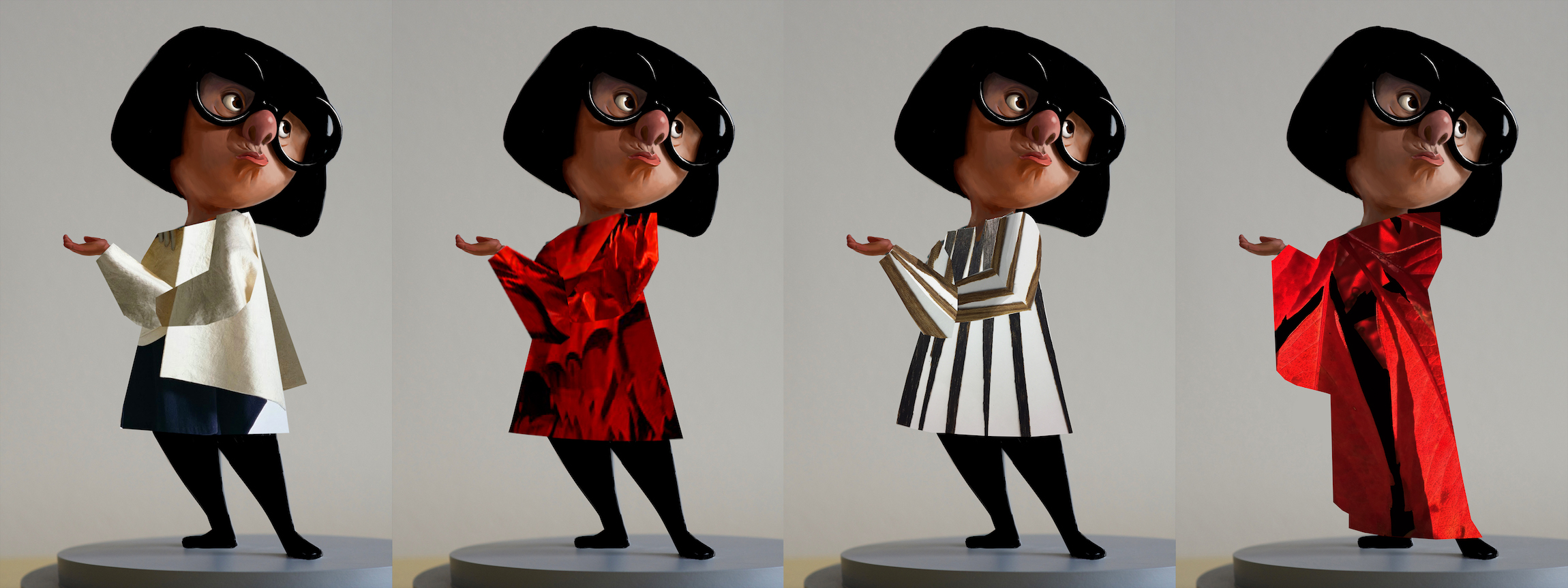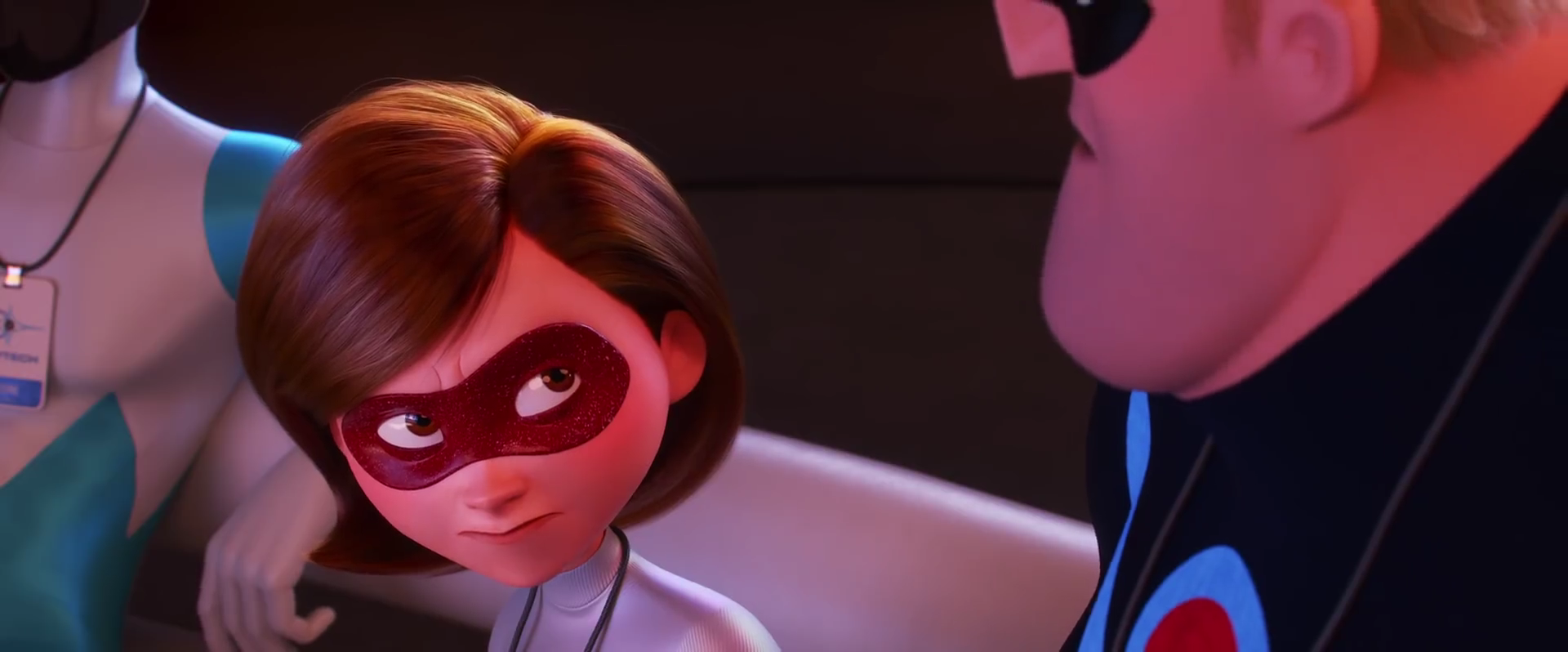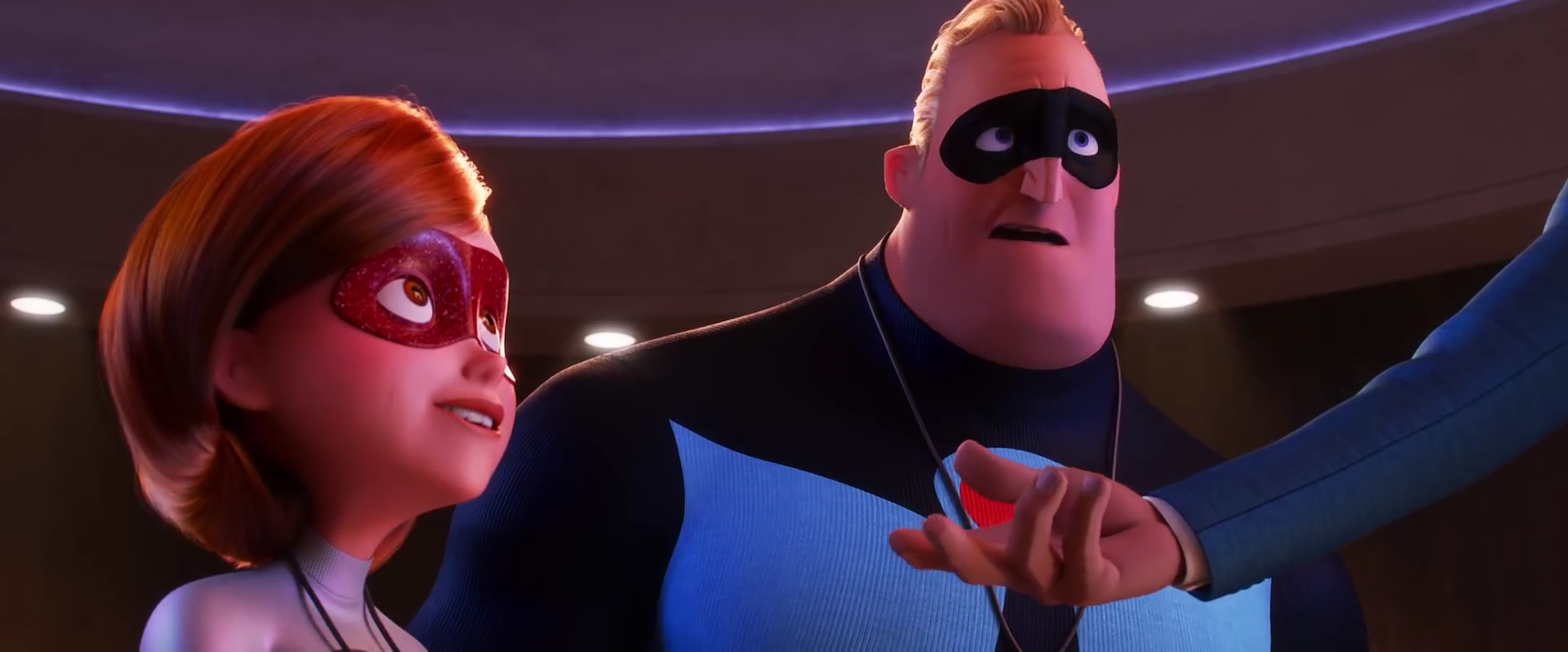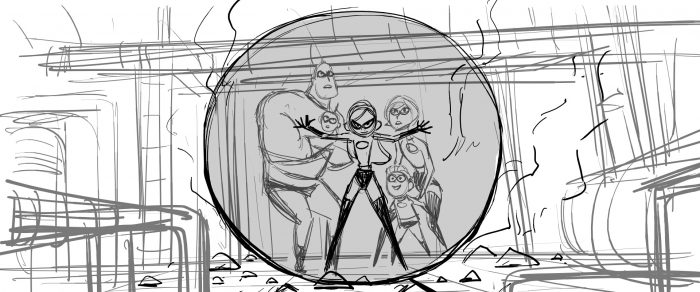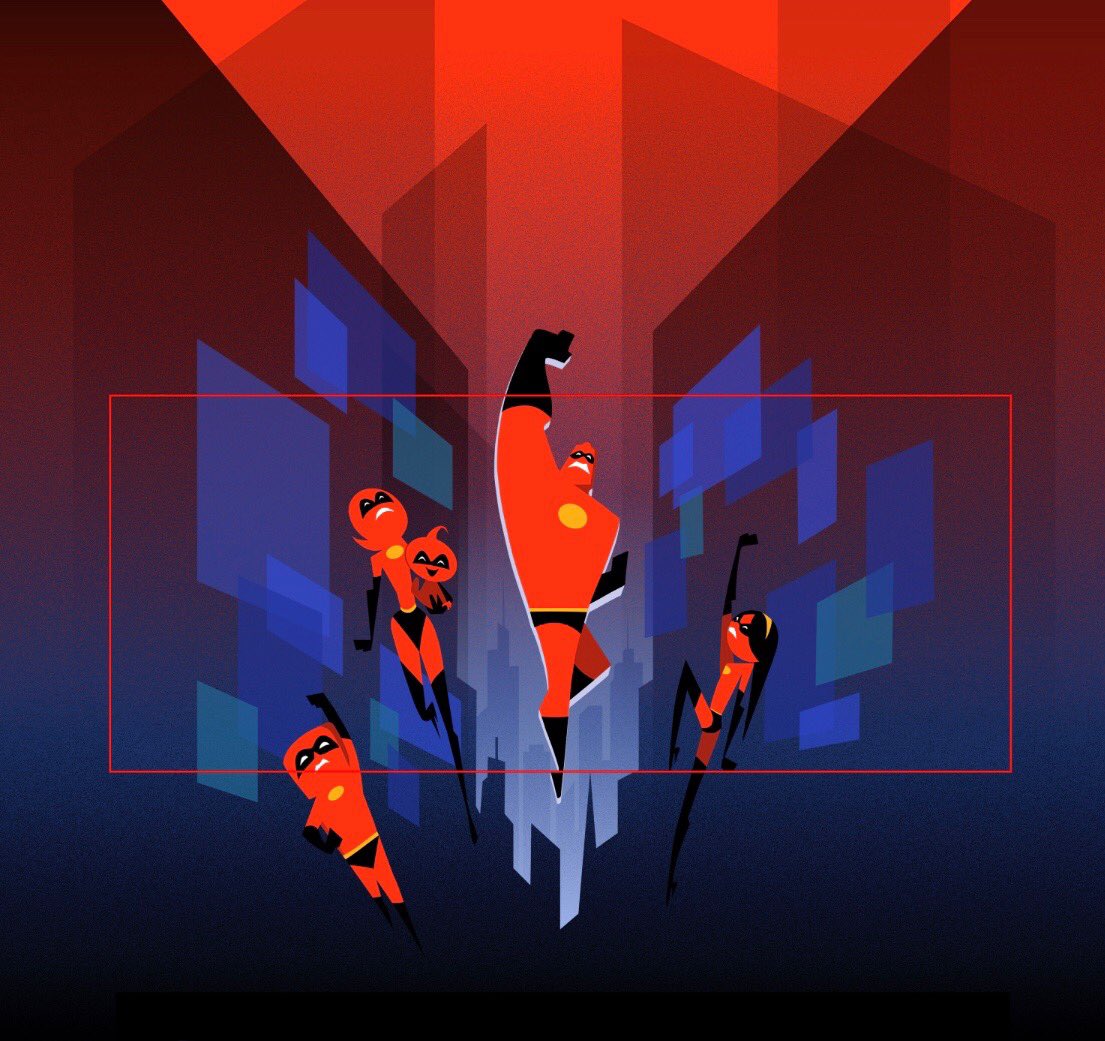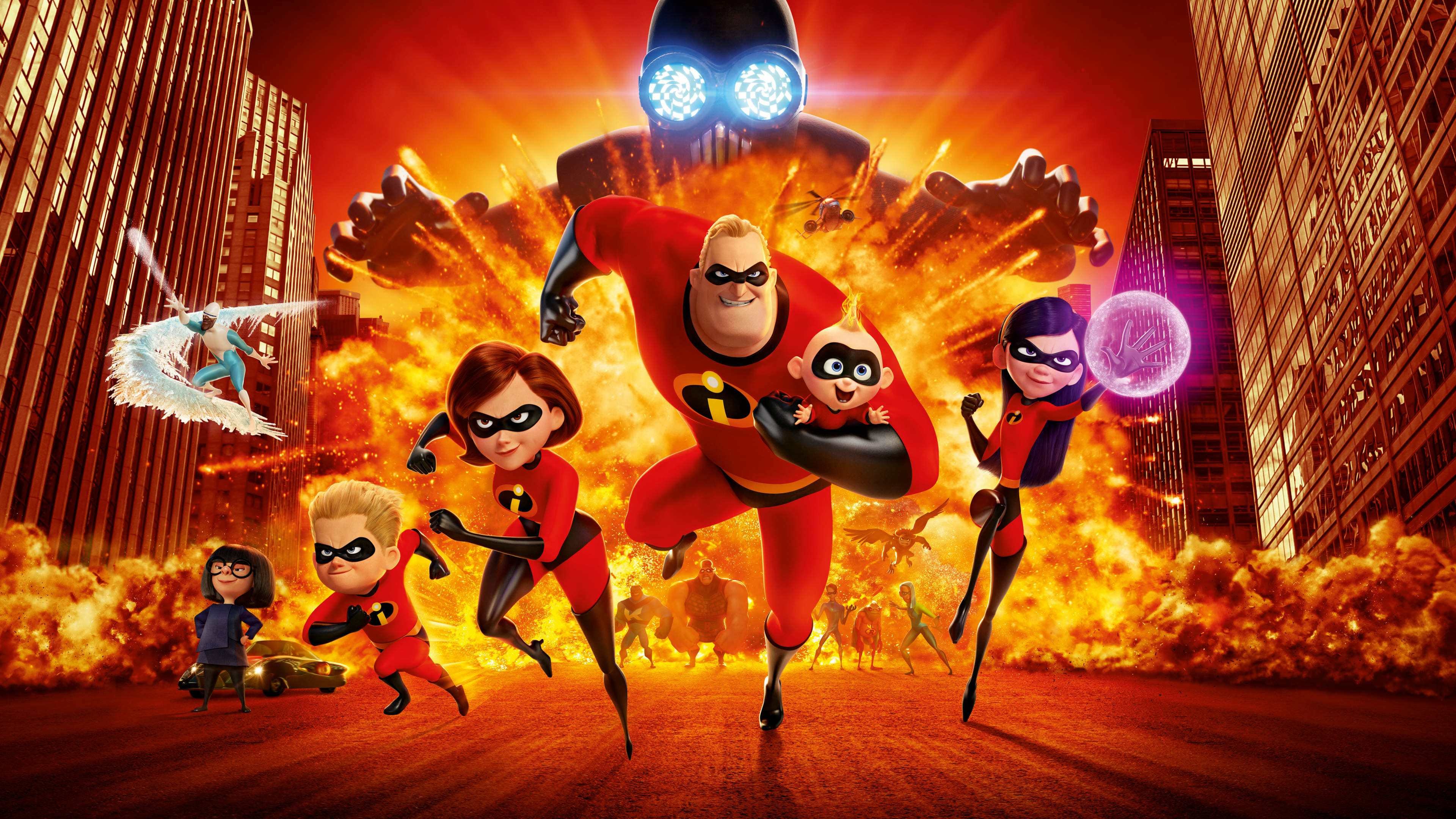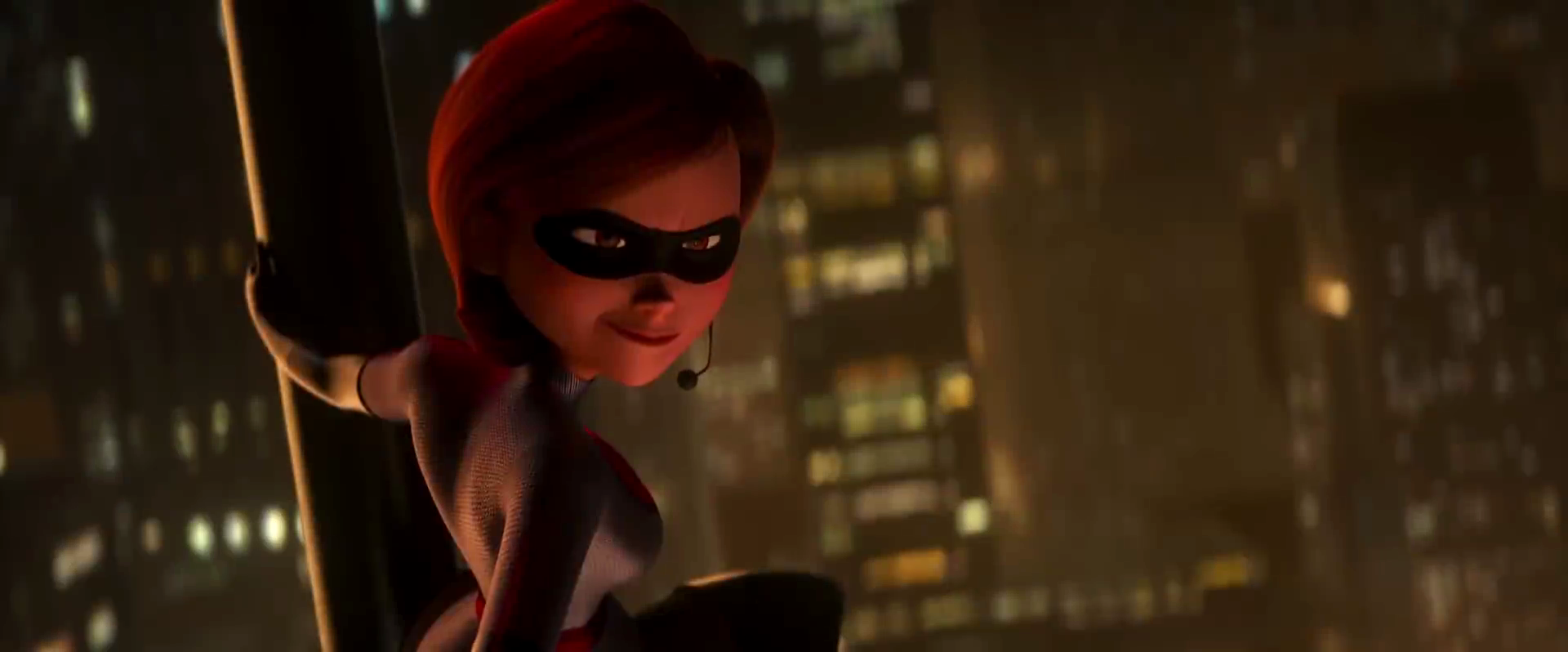On April 4th and 5th I visited Pixar Animation Studios for an amazing two days that were solely dedicated to the Incredibles 2. While I was there, basking in the magic of the studio, I attended presentation after presentation on the making of the sequel, got to see the first 30 minutes of the film, was one of the first audiences to see Bao (the new short that will be playing in front of the film come summertime), and I even got to do arts and crafts as I created my own superhero (a moment I will cherish for the rest of my life).
Here are some of my favorite things I learned about the making of the Incredibles 2 from all of the filmmaker presentations that will definitely have you dusting off your super-suit, anxiously tapping your toes, and eyeing the calendar as you count down the days until June 15th.
- Despite it being 14 years since The Incredibles, Brad Bird set the Incredibles 2 right after the first film because he “wasn’t interested in a college aged Jack-Jack.” He thought the Parr family would stay more iconic if everyone situated themselves and stayed the same. If it worked for the Simpsons, it would work for the Parr family.
- In the sequel Bird wanted to explore the roles of men and women, especially the importance of fathers participating, allowing women to express themselves through work and that they’re just as vital as men, and he even wanted to shine a light on how we’re constantly being controlled by screens. Bird was also keen on depicting the difficulties of parenthood and how parenting can be seen as a heroic act.
- The reason it took 14 years for the team at Pixar to create a sequel to the The Incredibles was because Brad Bird finally had a story he wanted to tell. Although most sequels in Hollywood are obviously cash grabs, Bird wasn’t interested in the film being produced for the sole purpose of making more money for the studio. He wanted to “make a film that audiences would enjoy 100 years from now.”
- According to Ralph Eggleston, who was the production designer on the sequel, the look of the Incredibles 2 was inspired by mid-century mundane architecture, which is basically “not the coolest looking buildings, but the stuff that was in between the cool buildings.”
- In order to build this new world from the ground up, Ralph Eggleston and his brilliant team of designers had to think about details that wouldn’t even be featured in the film, such as a mosaic that was included on the side of a hotel or another fancy mosaic that was in Bob’s new office. If it was featured in the film, only a brief glimpse would make it on screen.
- Brad Bird wanted the designs in the film to be “the best and most everything… to be set in places that were real and to cheat only when they absolutely had to.”
- Compared to the Parr’s gorgeous new mid-century modern home that you saw in the recent trailer, the house was originally much smaller based off the needs of the story. But after Brad Bird had to combine different elements of the story, they needed a much bigger house and in a shorter amount of time. Of course this came way after the first home had basically been developed. It had taken the team of artists 8 months to design that first house, and they only had about 2 1/2 weeks to re-design everything again. It’s mind-blowing to think they created that gorgeous home in that amount of time but according to Bird, “everyone rises to occasion when crunches are really made in the schedule.”
- Like every film at Pixar, the Incredibles 2 began in the story department. The story artists essentially create a story reel, which is a drawn version of the film. Their main job is to communicate what the film would ultimately be on screen, AKA Brad Bird’s final version of the film. The boards consist of relatively quick drawings edited together with temp music, sound, scratch, etc.
- A lot changes between what’s seen in the boards and what makes it on screen. In fact, some of the hardest parts to board in the Incredibles 2 were the action scenes. In the script they were pretty nonspecific, which Ted Mathot, Story Supervisor on the sequel, pointed out “they usually said something like ‘amazing action sequence ensues’ so it was up to the board artists to bring that to life.”
- The board artists approached the action scenes through the character standpoints. How does a character specific to that world and film, such as Elastigirl, approach the situations? How can she make that action unique from what’s seen in copious amounts of other films in Hollywood? By making it more specific to Helen and her powers, it made the action scenes better.
- Collaboration is key in Pixar’s filmmaking process and it’s important that everyone’s on the same page about what they’re looking at, especially with all of Ralph Eggleston’s designs. Once things are taken into the storyboard phase it can get super tricky. That’s where pre-vis comes into play. Pre-vis builds simple models and prototypes everything quickly into a computer so that everyone at the studio who’s working on the film can have it as reference. That way, all the of the background, character designs, props, etc., all remain consistent and no one is creating new designs. Pre-vis creates maps (mapping out the action in the scene, where characters need to be at certain times), floor plans of the new locations, and even compiles all of Eggleston‘s work so that it could be used by everyone in all of the different departments throughout production.
- It’s also important for Brad Bird to see those sets created by Eggleston in the storyboards. The reason why this is so crucial is because things can be tested in the board stage before it’s sent to the other departments. You don’t want to be making changes to the backgrounds or character designs once it gets to animation.
- The sets department at Pixar is responsible for a plethora of different elements in each film – they’re the reason why each Pixar film looks so unique and stands out from some of the other animated films released by other studios. They make all the props the characters interact with, the interior and exterior sets, the vehicles, the skies, and even the set extensions. The department is so big it has be to be separated into five sub departments: modeling, set dressing, shading, set extensions/skies, and sets tech.
- The modeling department are the sculptures and upholsters – they make the world feel more natural and more real in a computer, which means they basically have to touch literally all the props in the film (disrupting all the straight lines that are normally made in computers and making them look more natural).
- The set dressing department arranges everything, taking all the props made by the modeling department and filling in the empty spaces in each scene. They fill up places with furniture and handle essential story point objects (a sink full of dirty dishes, a table full of breakfast in the morning, etc).
- The shading department takes all the props and sets and gives it the color, texture, reflections, and the qualities it needs based off how each objects reacts to light; their biggest challenge is trying to replicate how it would look like in real life. “They take marble and make it shiny and they make the cabinets in the kitchen semi-glossed. They deal with the world that’s close to us and the characters.”
- The set extensions/skies department deal with the world that’s far away from us. The big cities in the background, the big/broad skies, etc.
- And finally, with set tech, they are the unsung heroes of the set department. They do a lot of coding and support and they’re the ones who keep everything running. For the Incredibles 2, they created a 360 degree camera that showcased the whole world in each scene; they even created the parts of the set that didn’t make it in to the final shot. For example: the set tech’s prune each set based off the framing. Everything that’s not needed for an exact shot gets taken away and turned off, so it doesn’t have to be rendered or run through the pipeline. It’s all done to save space and memory and it’s usually applied on a shot by shot basis.
- According to Deanna Marsigliese, character artist on the Incredibles 2, “Costume design for animation is no different from costume design for live action – in fact, many people argue that costume design for animation is more difficult.”
- Just like the architecture in the film, the clothes are also heavily influenced by mid-century aesthetics.
- Deanna has a passion for vintage styling, particularly mid-century modern, and she incorporates the styles she loves into her daily wardrobe (when I saw her at Pixar she wore a gorgeous vintage shirt and skirt and looked like she had just traveled through time to give us the presentation) and that’s one of the reasons she was brought on to do costume design on the Incredibles 2.
- Deanna’s creative process included two different components: being creatively theoretical, “which is all about abstract thinking through storytelling” and being creatively practical, which is obviously centered around being clever and efficient (which is more focused on dressing all of the background characters).
- Bryn Imagire, the Shading Art Director, returned to the world of the Incredibles after designing costumes on the first film. Since the sequel isn’t really set in a specific time period, Brad Bird was OK with the team referencing current fashion since some characters wouldn’t work well within that time period, such as Bob wearing his iconic jeans and a T-shirt.
- Technology now is more advanced than it was 14 years ago, so even that affected the clothes and the shading and how the garments fit the characters. Looking back, their original super-suits stretched a lot and didn’t feel like they were worn by the characters; they just looked like they were pasted over their bodies. So their new suits in the Incredibles 2 are made from actual patterns and have real pattern textures, which means they don’t stretch around as much and they actually feel like real fabric.
- According to Bryn, Bob’s style was inspired by Paul Newman, “the handsome, robust family man.” Also, since Helen is helping bring superhero’s back into the spotlight, Bryn focused on Mary Tyler Moore, Marilyn Monroe, and Audrey Hepburn for her costumes; “they were all strong, career oriented, and fabulous women all at the same time.”
- At one point in production, Brad Bird told Bryn that Edna Mode is actually Japanese and German, so Bryn looked at Japanese fashion designers for inspiration: Rei Kawakubo, Eiko Ishioka, and Chitose Abe were huge in the development process for her. Bryn chose those designers because they “contrasted heavily to what they wear in their day-to-day lives and what they design for their models; their personal looks are way more comfortable compared to the high fashion created for their lines.”
- According to Fran Kalal, Tailoring Lead, one of the biggest challenges of designing clothes for animation is the artists at Pixar “can’t take a sweater from Up and throw it into the world of the Incredibles 2, it just doesn’t fit into that mid-century modern world. With each film the artists have to start from scratch every time and re-define the visual language of what fabric looks like in each new place.”
Make sure you stop by again later in the week – I will be posting about the first 30 minutes of the Incredibles 2, going in-depth about the making of Bao, writing a review of the short film, and also sharing a bunch of other things I experienced during my trip to Pixar earlier this month.
Tags: Brad Bird, incredibles 2, The Incredibles 2 Last modified: April 16, 2018
